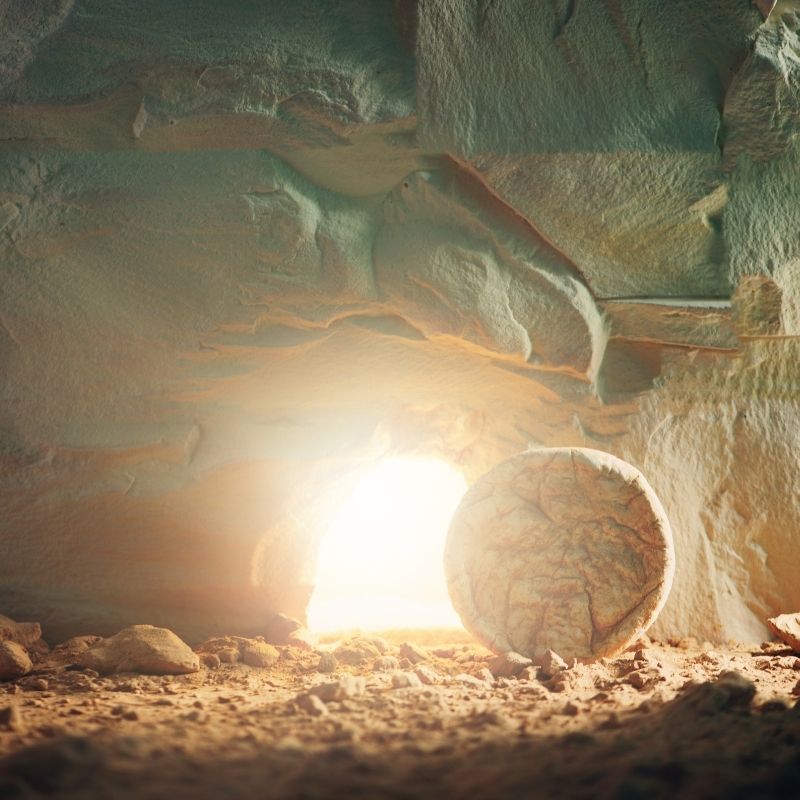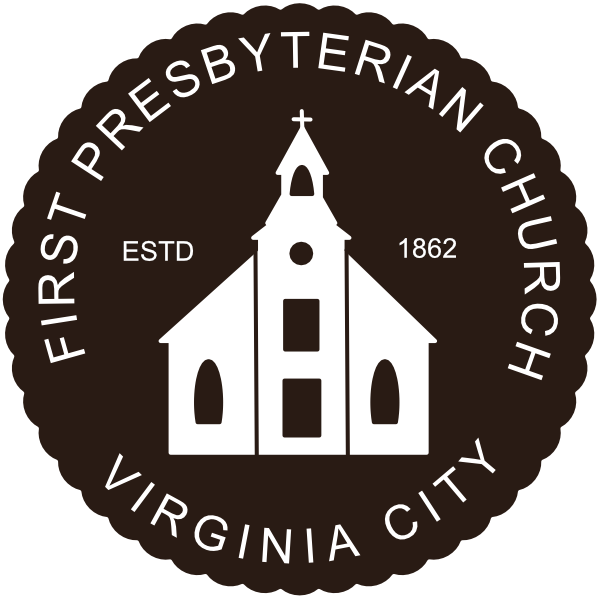
The first glimmers of the morning light were peeking over the horizon. Carrying her basket of oils and spices meant to complete preparations for the burial of the body, Mary Magdalene cautiously made her way on the half-remembered path, stumbling as she felt her way up toward the garden tomb. Gradually, the cold, gray light of the early dawn outlined the naked rock that should have sealed the tomb. In shock and horror, Mary saw the massive rock had been rolled away from the crypt’s opening. The reality, the horror hit her instantly. Someone had stolen Jesus’ body. Screaming, she crashed back down the path back to the house where she’d been mourning Jesus’ death since that horror filled Friday.
When we talk about seeing something, the idea can take on multiple meanings. In one sense, it means to perceive with the eyes, to discern visually, such as I “see” (name) sitting in the (blank) pew this morning. It is an observation that can be confirmed and verified. But there is a second understanding of the word, which means to discern or deduce mentally after reflection or from information; to understand, such as “Oh, I see! It’s actually quite simple.” It is like having that “ah-ha” moment after we have a chance to reflect on what we experience with our senses.
It is likely that Mary had been with Jesus throughout his ministry. She had come from a dark place in the small town of Magdala, where she was beaten, starved, and likely violated, a woman of no means especially as she was reputed to be possessed of “seven demons” (according to Luke’s gospel). Upon encountering Jesus and receiving healing for her tormented soul, she joined his group of followers and likely was privy to all the disciples had heard (much of which they had not understood) and so, like them, did not comprehend his teachings about his resurrection.
That fateful morning, as her eyes fell upon the scene in the garden, she was able to see in that dim morning light that the stone had been removed from the opening of the tomb. As her eyes contemplated the scene, she made the deduction that the body had been removed from the grave. She saw an open tomb, and while John does not specifically tell us that she looked inside, she immediately, and perhaps instinctively, realized that the body was gone. As far as Mary was concerned, Jesus had died, had been laid in the crypt and logically,understood the only possible answer to the open tomb was that his body had been stolen away.
I can image her screaming, leaving her basket behind, as she went crashing back down the path that led to the house where she, along with several of the disciples, had been mourning Jesus’ death since that horror filled Friday. She had been there that day; she had been in the background all the while when he was crucified (which is more than can be said for most of the male disciples). She had watched the blood ooze from his wounds for hours, intensifying every time he heaved his body against the nails to take an agonizing breath in order to keep from suffocating–until there was no strength left in his battered body. She watched as they lowered his body from the cross. And she was among those who were there when they put what was left of him in the tomb.
Now again, with Peter and John in tow, she scrabbled back up the path toward the tomb, until she stood, her chest heaving with exertion, as well as with her sorrow mixed with rage at whoever had committed this theft. Peter and John went in and confirmed that the tomb was empty, with the exception of the remaining graveclothes.
Then they all forced themselves to believe the unbelievable. “He’s gone, Mary.” There was stunned, deadness in Peter’s voice. “All they left us was a corpse. Now they’ve got that too.” And Peter stumbled off, going nowhere but away from this revolting desecration, with John following.
But Mary stayed. She had nowhere to go. She had nothing left. The power of her rage was spent. She was exhausted. She slumped her deadened body on a rock.
Head in hands, she sat. And in her anguish, she wept, huge sobs racking her body.
And then, through the prism of tears, she saw the light of dawn, slanting through the rocks into the garden. And there, in that golden light, she saw a figure, a man. She seems to have seen a gardener, because who else would it be here in this place so early in the day. Barely looking at him, she begged, “Look, if you took his body, tell me where, please, just tell me where, so I can go and get him and give him a decent, human burial. Tell me, please, tell me!”
What Mary saw was a man. But she perceived him to be a worker, for common sense told her that was the logical person to be in that place. While countless gallons of ink have been used by theologians to explain why she did not recognize Jesus in the garden, with theories ranging from the angle of the sun in Mary’s eyes to the assertion that his appearance had changed in the resurrection, I would simply say that Mary did not “see” Jesus standing there, because she wasn’t expecting to see him. In her mind, Jesus was dead, his body stolen, and she could not see any other possibility.
And then he spoke. “Mary.” It took some moments to move its way through her sobs and into her consciousness. She heard it a second time. “Mary.”
And then, through her tears, Mary saw him, but now she truly saw him. “Rabbi,” she whispered, and then shouted, “Rabbi!” Springing to her feet to embrace him, the light of morning sparkling through her tears, Mary rushed toward her Jesus.
“Please don’t touch me, Mary,” he said. “There are reasons. Don’t be afraid, Mary. But go and tell our friends that death has been transformed to life and that despair has turned to hope.”
In that moment in which Jesus said her name, Mary saw Jesus. Not just looked at him, but truly recognized him. In this particular text, the verb used by the gospel writer is the Greek “theorein” which means “to look at with concentration”. It implies a look that lingers, studies carefully, considers slowly. In the context of today’s scripture, it means to truly perceive and accept as reality.
What Mary saw that first Easter morning, both with her eyes and with her mind, changed how she saw the world. Her first response was to run back to the others, this time with joy, to share the good news that Jesus was alive; he had risen as he said. She now saw a world, in a new and different way, filled with joy with the light of the resurrection.
I wonder how many of us, like Mary, have come to see the world in a different light once we accepted the reality of the resurrection and Jesus as our savior? How many of us were once like Mary, perceiving only darkness and gloom, until the light of Christ shone in on our lives? How many of us, once we came to know the resurrected Christ, saw a world with new possibilities and hope for a future? How many of us have been changed following our encounter with the Lord? And if you have not yet encountered the joy of the resurrection, I invite you to do so.
In closing, there is a tradition in the Eastern Orthodox Church – the priest stands before the people and says, “Christ is risen,” and the people respond, “Christ has risen indeed.” They repeat this three times. It’s a reminder to us in our Easter worship, our job is not to hoard the good news of the resurrection. Rather, our job is to proclaim the good news to the world, to proclaim Christ’s victory over the grave. Let us begin with a rousing triple response:
Christ is risen. He is risen indeed!
Christ is risen. He is risen indeed!
Christ is risen. He is risen indeed!
Thanks be to God. Amen!
